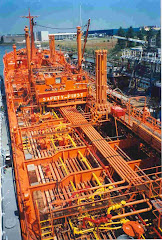Nordea and Lloyds TSB, which agreed the $170m deal in May on five bulkers, appear to have alleged that “certain events of default” have taken place, including its financial condition changing for the worse. They are said to have provided cash for daily operations and requested vessels to be sold. Shortly thereafter, the company went into receivership, appointing an administrator.
The lenders are top-tier shipping banks with a big experience factor in this cyclical industry. Normally banks work closely with the clients in bad markets, supporting them until conditions improve. Declaring loan default is a very drastic action that banks generally avoid unless the risks of loan losses are very high and/ or their confidence in management is very low.
For these reasons, there appears to be more behind these events than we know. I have previously written on DWT: Britannia Bulk: Perils of leverage, COA's and chartered in vessels on the 29th October, where I lay down in detail the possible factors in Britannia's plight.
Selling vessels under present market conditions is likely to be at distress prices. Older bulker units at record high prices just months ago are not likely now to fetch more than scrap, which is also falling in price. No doubt the units mortgaged to these banks are fairly young, but Britannia is not likely to get much relief unless market conditions improve.
Their banks would appear to believe that Britannia does not have much resilience to survive the downturn. Britannia decided to appoint an administrator under UK law, putting the company effectively under bankruptcy protection.









No comments:
Post a Comment